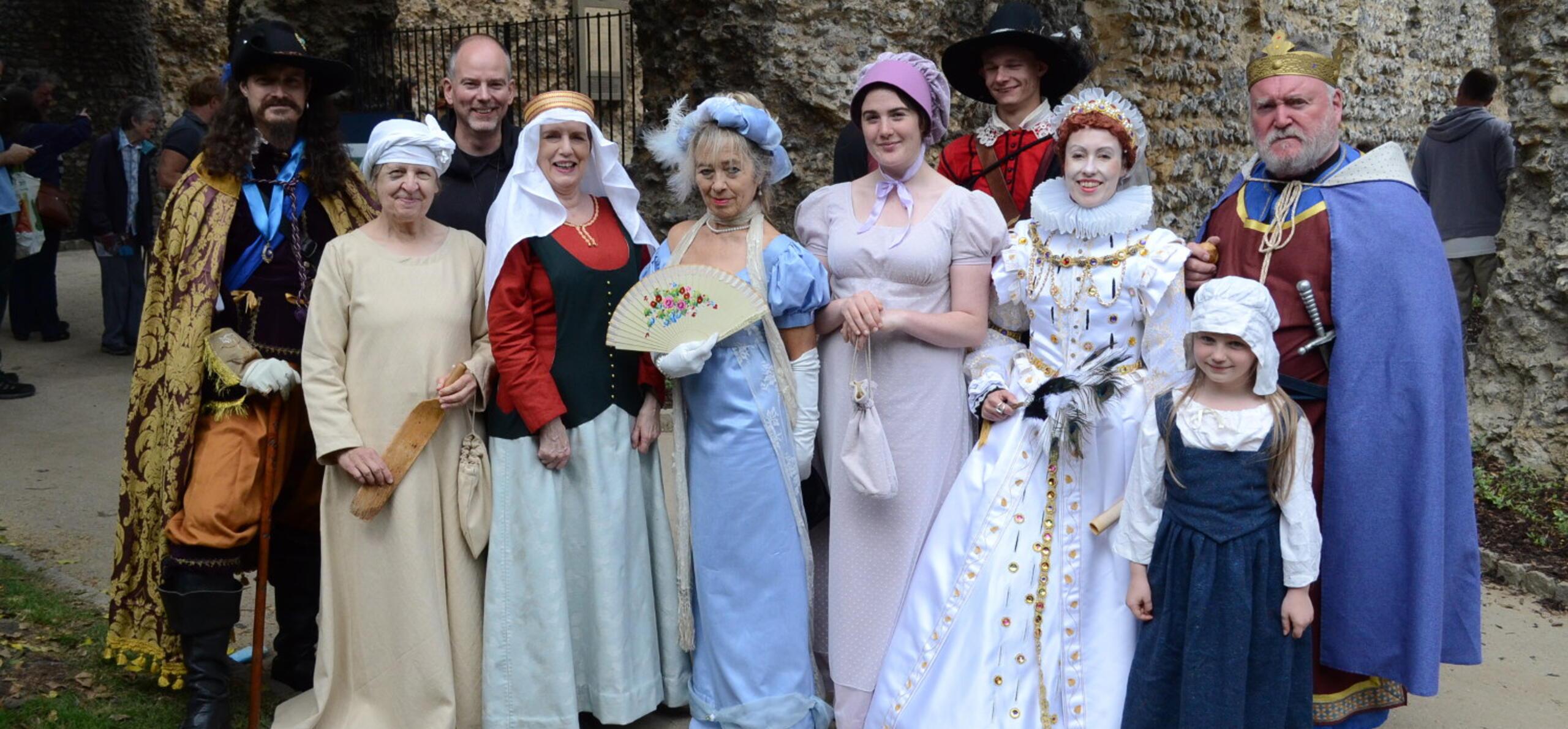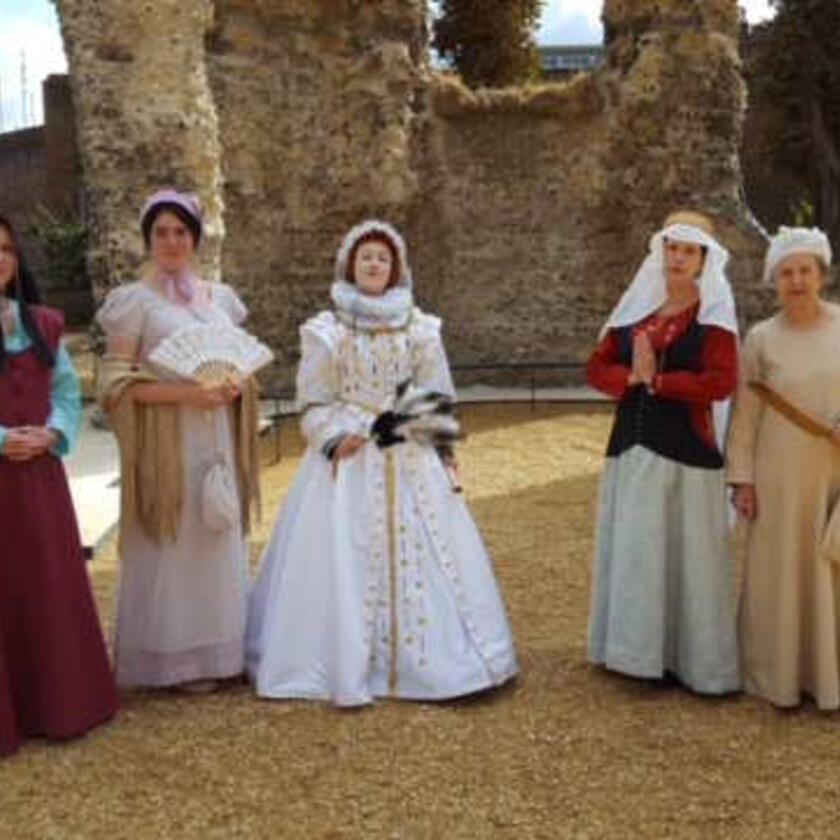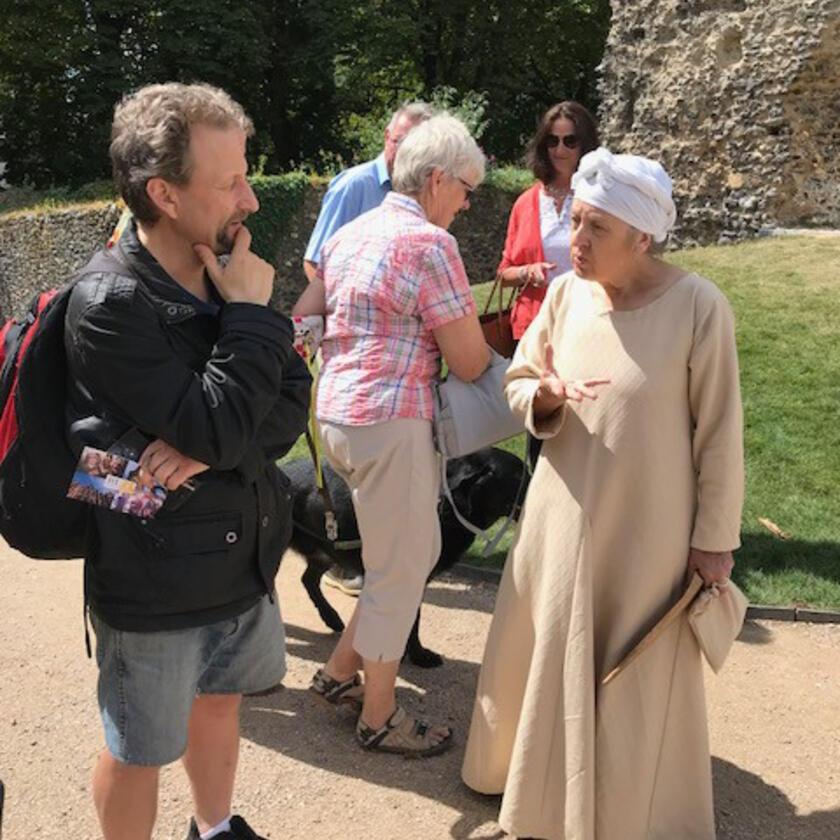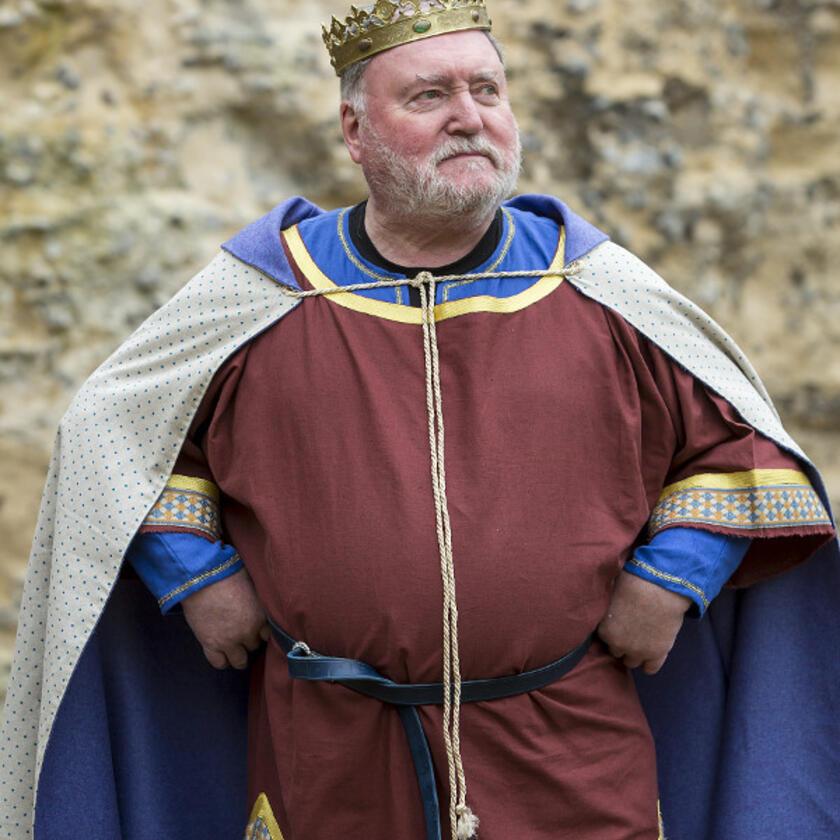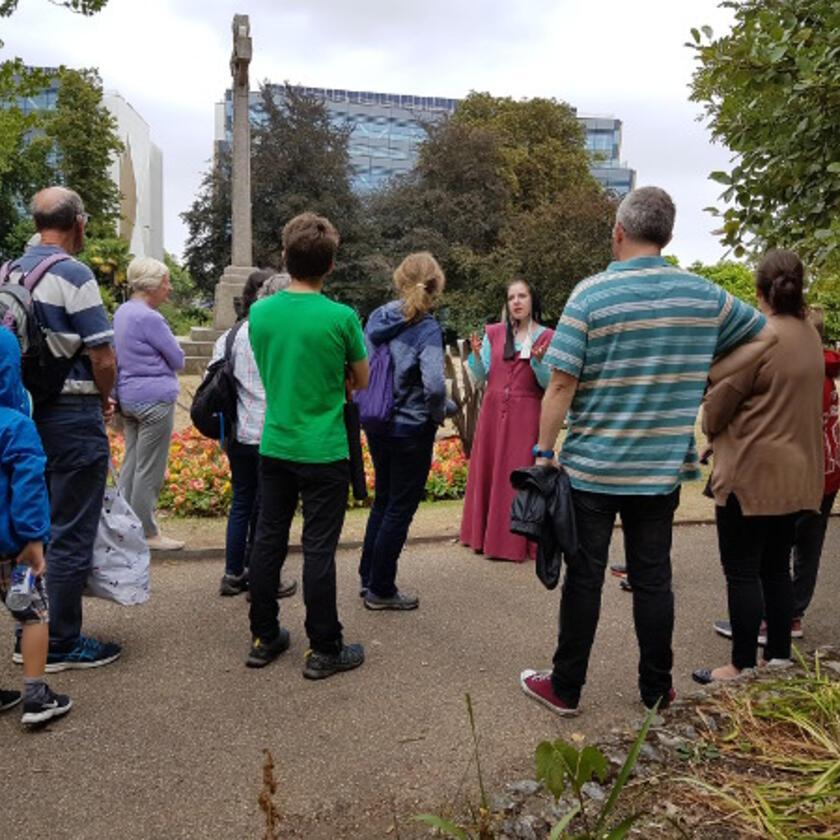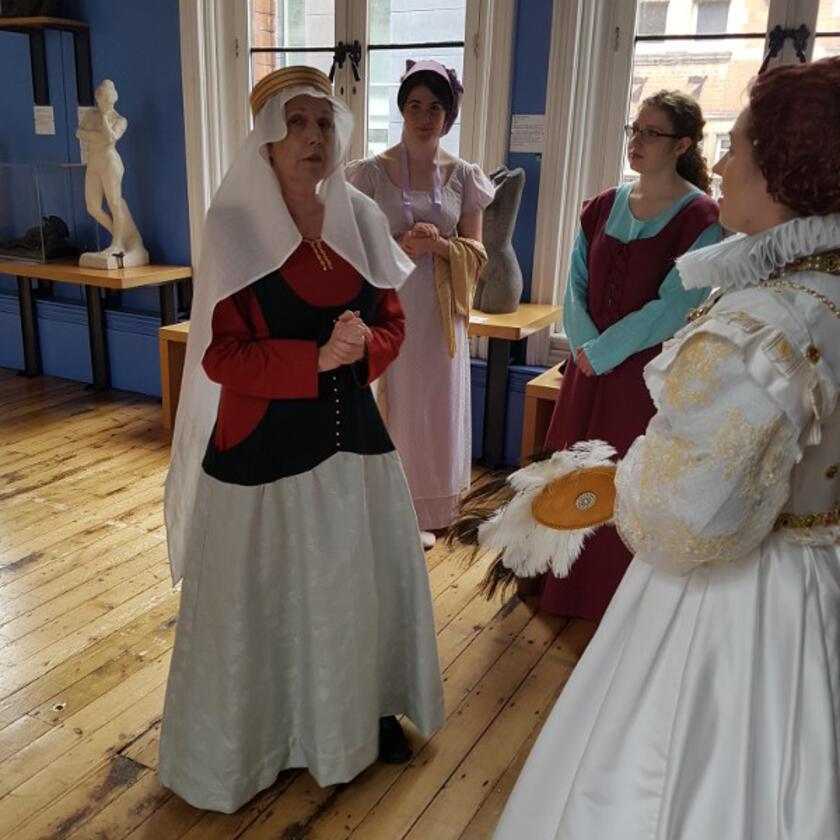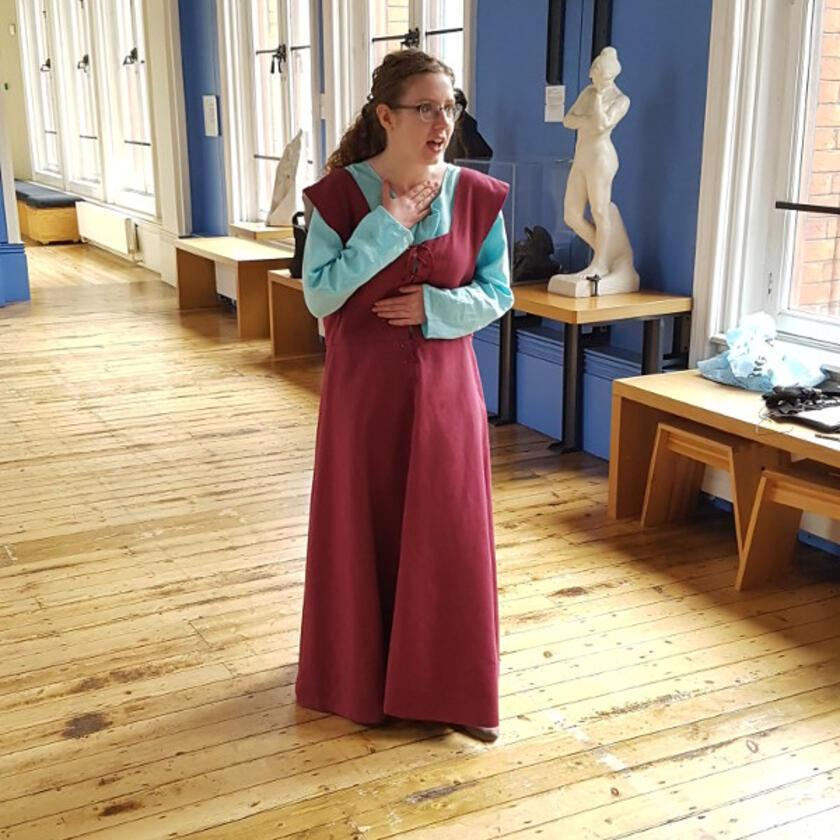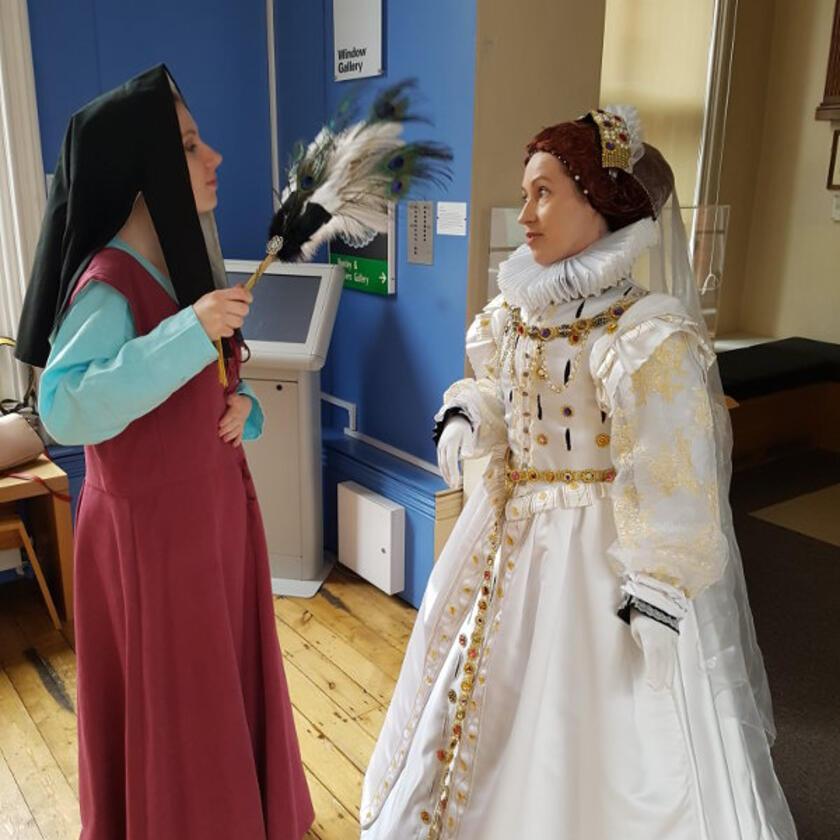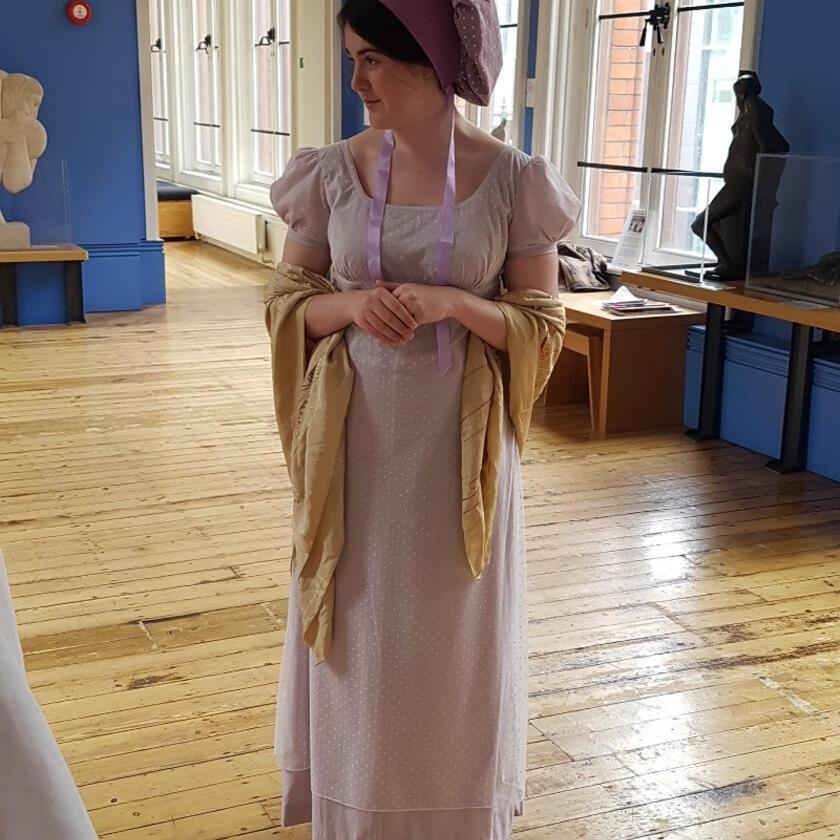Fancy being a talkative Tudor, a loitering laundress or even King Henry himself?
Reading Museum is on the hunt for new people to join its friendly, dedicated costumed interpretation volunteers and bring Reading’s history to life this summer.
We’re looking for students, teachers or people who love drama, to become our Jane Austen and her school friend, Abbey garden monks, a laundress, Tudor woman and King Henry I. We’re also looking for extra wardrobe assistants to support them at events.
Last year, to tie in with the re-opening of the Reading Abbey Ruins in June, Reading Museum trialled the use of costumed interpretation as a new way to reach out to communities and visitors and to share the stories of the key figures linked to the Reading Abbey.
Our wonderful volunteers dressed up as key figures from the Abbey Quarter to share historical facts and amusing anecdotes with visitors at weekend events and a school takeover day at Reading Museum.
Some were Reading’s royals – King Henry I, Empress Matilda, his daughter, Queen Elizabeth I, while others shared the lives of the ordinary people, such as Adeliza, a medieval laundress who worked around the Abbey, Holly, a young Tudor woman who lived in Reading when the Abbey was closed down and our very own Jane Austen, who went to school here, with her sister Cassandra.
Volunteering as Empress Matilda allows me to indulge my love of dressing up in a fabulous costume, with my passion for history and in bringing local history to life for people. I think many people are surprised by what a rich history Reading actually has!
- Costumed interpreter volunteer
What is costumed interpretation?
The use of costumed role play is a great way to help visitors to understand and empathise with the lives of the people who lived, visited or worked in the Abbey Quarter and to share their stories. It is different from historical re-enactors and craft demonstrators and as it is designed to be more immersive, encouraging visitors to get involved through positive interactions.
Certainly it is impossible truthfully to recreate the past, but accurately researched, well presented and well researched live interpretation is as valid as anything else presented in the museum environment.
- Penny Wilkinson (Museums Journal)
What does a historical interpreter do?
As a live costumed interpreter, you dress up in replica period costume and use different techniques to approach people and share historical information to bring your character to life.
To do this effectively, we used Past Pleasures Limited, who provide the historical live costumed interpretation for the Historic Royal Palaces, to train our volunteers and staff. They helped us learn how to ‘get into character’ through period postures and props, how to use a mix of empathy, humour, wit or even charm, to pique people’s interest and ways to keep them engaged while you share well-researched historical facts.
We set our volunteers the difficult challenge of not only ‘inhabiting’ their character but also talking in ‘first person’ (as if you are the character), which is very hard to do especially if you get asked questions! It’s something our volunteers have found easier to do with practice and we gave them lots of time to try out their different stories on each other, before they did for real!
Their presence and enthusiasm certainly enhanced our experience tremendously. All were very informed about their character and their period in time so that it brought the history of the Abbey to life. It made for a thoroughly interesting and enjoyable morning.
- Visitor to the Reading Abbey Quarter
This is your chance - apply today!
We’re now looking for extra people to join the group so there can be more interaction between the characters at events, while also offering the opportunity to work alone or in pairs. We are also looking for additional volunteer wardrobe assistants to support the team.
This historical interpreter role would be ideal for you if you love history, drama (you don’t have to be an actor) and are happy to dress up. The experience will also stand out on your CV or be a great talking point at a party! As an Investing in Volunteers accredited organisation, we will provide onsite training and support to help you to do well in your role.
How to apply
If you would like to be considered as a costumed interpreter or wardrobe assistant, then go to our Getting Involved volunteering page to read the characters' role descriptions, including details on how to apply: https://www.readingmuseum.org.uk/explore/get-involved/volunteer-reading-museum
Find out more
If you'd like to find out about the costumes that our wonderful sewing volunteers made for our volunteers, then read our 'Costume and Embroidery – A stitch, in time, for Reading Abbey Revealed' blog here.
It’s been wonderful to watch them grow into their characters as they became more familiar with their lives and history and we’ve received a great response from our visitors over the summer.
- Reading Museum's Volunteer Co-ordinator
